Up until a couple of weeks ago I was not sure that we actually had a mature longleaf pine on our property. That sounds ridiculous when you realize that our two lots are less than four acres. But I plead extenuating circumstances.
Most of our property is thickly wooded. A large portion is covered by a thick growth of fairly young pines. In some areas I almost have to take an axe to cut off dead limbs in order to get through, and dead pines are always under foot or leaning at a crazy angle blocking the way.
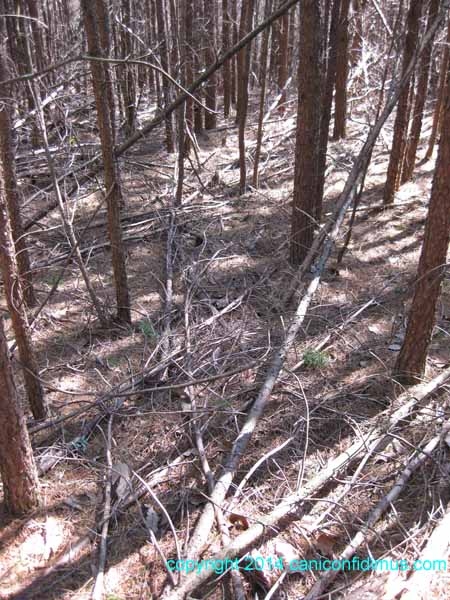
It’s hard to get around out there
A few years ago I took all day to cut a path along the back property line. There was a survey marker near Wildlife Trail and I knew the right heading to get to the interior corner. Unfortunately, the sight line was only a few feet. I started at the marker and tied a ribbon to a tree on the right heading. Then I had to cut trees in what I thought was the right direction. I sighted down the preceding ribbons and then tied a new ribbon on a tree that lined up. Then I did it again. I was surprised that I actually managed to take a nearly straight path to a survey marker, and I was surprised to find that there was actually a marker there.
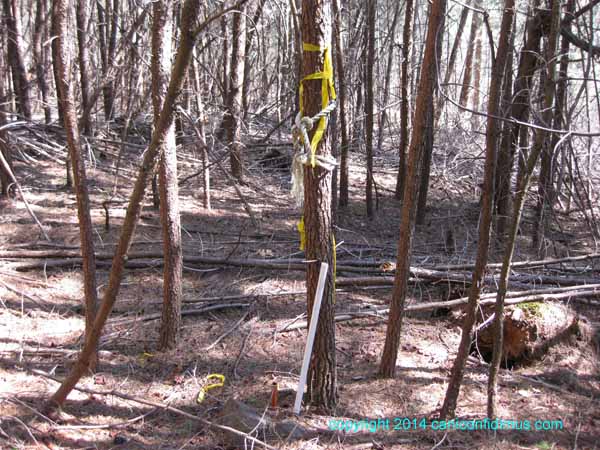
Here it is. A neighbor had another survey since I originally found the marker.
I found a couple of longleaf pines just on the other side of the line, but none on our property.
A couple of weeks ago I decided to cut through the woods from the back of the house to see if I could find the marker again. It was not easy. I have mentioned that there have been at least two and possibly three significant events on the mountain that affected the forest. The first that I know of was Hurricane Andrew in 1992. That storm clipped northwest Georgia and blew down trees here and there all over the mountain. There are places where large trees fell into a criss-cross pattern that is virtually impossible to cross. I think a lot of the smaller downed trees on our property were victims of Andrew.
A second event was a fire. I can’t tell when that happened, but there is evidence everywhere around the property. Many of the larger pines have blackened bark on the lower part of their trunks. I also found a layer of ash buried anywhere from a few inches to a foot or more below the current surface. The buried ash layer indicates a possible third event in which most of the topsoil in the upper part of the lot was pushed partway down the slope. It’s possible that’s a result of firefighting.
Whatever the cause, most of the trees on the upper part of the property are young. You can tell the younger trees from the older trees by the difference in texture in this Google Earth image on our property. The young, thick growth of trees looks smooth compared to the older trees. Our house is in the center of this image. The yellow angle brackets point at utility poles at the property boundary. I can’t tell where the back corner is.
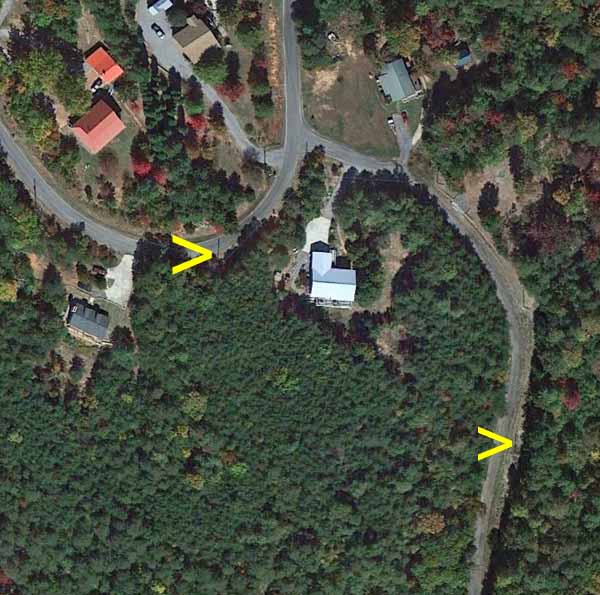
So I started out, aiming roughly at the back corner. I made my way through the woods, constantly straining to look up through the foliage. I think it’s possible to identify a longleaf pine by its bark, but I can’t do it. The only way I can tell one from a loblolly or a shortleaf pine (I think most of the shortleaf pines on Lavender Mountain are Virginia pines) is by seeing the needles.
I was happy to find a longleaf pine that was definitely inside our property lines. It’s not easy to tell in this image, but the pine in the center is a longleaf.

There are bigger longleaf pines nearby, but this one is fairly big.
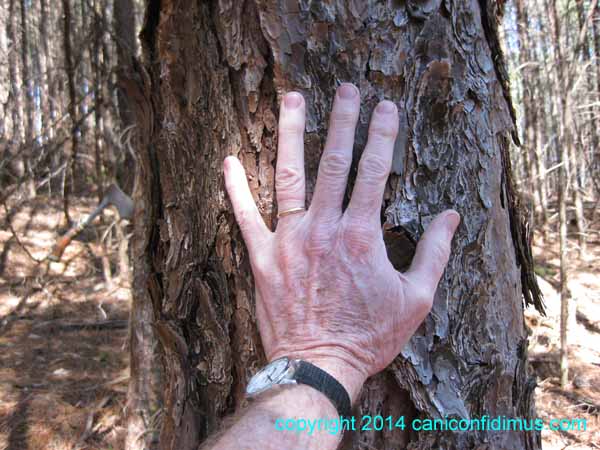
There is another candidate that can just be seen from Wildlife Trail on the lower part of the property. I’m not certain of this one, but I’m pretty sure. The main reason I haven’t settled this one is that I can just barely see the top of the tree from the street. The top of the tree is much harder to see from close to the base.
Meanwhile, back in the civilized part of our property, the little transplanted longleaf seems to be doing pretty well, aside from some dying off of a few needles on one part of the tree.
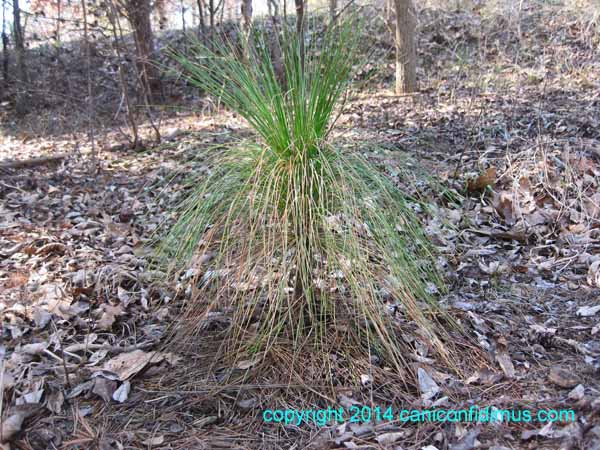
At first I thought this was the result of a natural process, but then I realized that the tree had become a regular rest stop for Zeke on his walks around the house. Once I realized what was happening, I closed that rest stop. Zeke can pee pretty much anywhere else, but not there.
So now we know that there is one bottlebrush longleaf that I planted, and one mature longleaf on our property. That makes me happy. I need to positively identify the other candidate, and then I’ll be pretty sure about our own longleaf pine population.